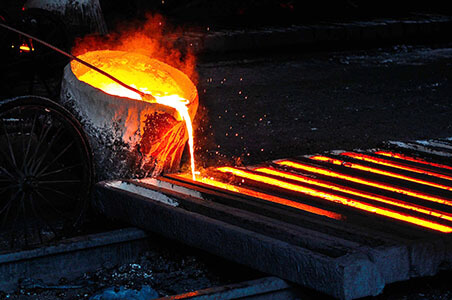This is a lesson summary. The full lesson can be viewed by purchasing an online course subscription.
Learning Objective
In this lesson we will learn about different methods for obtaining pure metals from ore, and how the method used depends on the chemical reactivity of the particular metal.
Learning Outcomes
By the end of this lesson you will be able to:
- Describe how the form in which a metal exists in nature, and the method used to extract it, are both related to the metal’s reactivity.
- Define a native metal and give examples of methods used to separate them.
- Describe the processes of carbon reduction and electrolysis for extracting metals from ore.
- Compare the energy requirements for native metal separation, carbon reduction and electrolysis, and give examples of metals extracted by these methods.

(Image: Erdenebayar, Pixabay)
Lesson Summary
- In nature, most metals exist as compounds (minerals) embedded in surrounding rock (ore).
- Only the least reactive metals, such as gold and silver, exist in their elemental metallic form.
- These metals are known as native metals.
- The chemical reactivity of metals also determines their method of extraction.
- Native metals undergo physical separation processes, such as froth flotation.
- Froth flotation uses detergents to create floating bubbles that adhere to metal particles, while other materials settle out and are removed separately.
- Metals with an intermediate reactivity, such as iron and zinc, are chemically extracted from minerals by a process known as carbon reduction.
- Carbon reduction is a type of redox reaction, where carbon is used to displace a metal from a compound.
- The crushed ore is mixed with carbon and limestone, then heated to a molten state (smelted) in a blast furnace.
- In the subsequent chemical reaction, the metal-containing compound is reduced (loses oxygen) to form pure metal, and the carbon is oxidised (gains oxygen) to form carbon dioxide.
- Very reactive metals are extracted by a process called electrolysis.
- Electrolysis is a non-spontaneous redox reaction, which involves the passing of an electric current through molten ore.
- The electric current causes electrons to be added to metal ions, thus reducing them to metal atoms.

(Image: Björn Wylezich, Adobe Stock)
(Header image: shibang, Pixabay)
